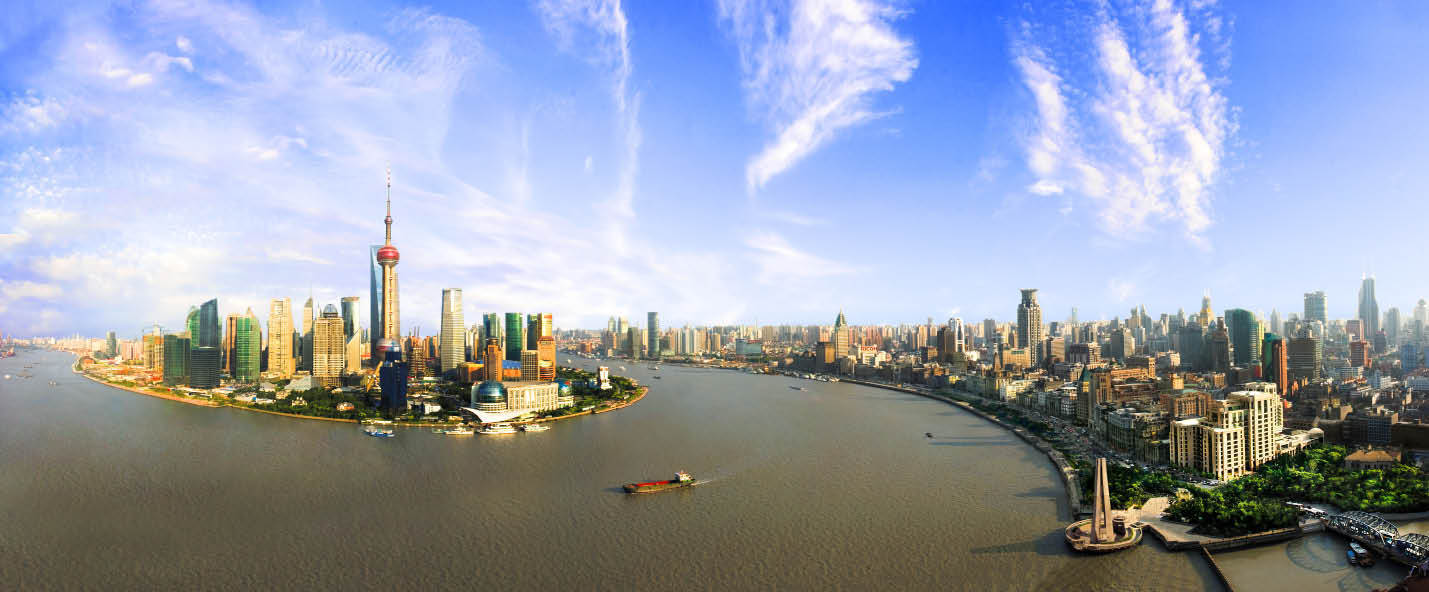Shanghai’s Ascent to Exhibition & Convention Business
By SUN LI
 |
| The Lujiazui CBD. |
THE eastern metropolis of Shanghai has for decades been a main driver of the Chinese economy, and long a point of convergence for companies throughout the world to meet and do business. The 2010 World Expo and the overall upgrading of local infrastructures it entailed have further stimulated Shanghai’s vitality. The municipality’s ascendancy to global finance and shipping industry makes it both more attractive and accessible to business travelers.
China now accommodates the world’s fastest-growing market for exhibition/conference business. During the five years from 2006 to 2011 the floorage of the nation’s exhibition space grew by 48 percent, accounting for 69 percent of Asia’s total. Regarded as a city’s bread and butter industry, this sector, comprising trade shows, conferences and special events, is now a glowing nova in China’s tertiary industry.
Shanghai’s exhibition and convention business has experienced unprecedented growth over the past decade. The number of international meetings held there rose from 292 in 2002 to last year’s 745, and participants swelled from 68,465 in 2005 to 204,040 in 2011.
These figures spiked in the wake of the 2010 World Expo. In the year that followed Shanghai rose to a No. 24 ranking in the International Congress and Convention Association (ICCA).
Trade fairs constitute parameters of market and industry trends, and Shanghai is a favored destination among professional exhibitors. Their influx and the growing presence of world established brands have created a raft of companies providing convention and travel services that have opened offices or set up subsidiaries in the city. Their operations have in turn enhanced the level of marketization and professionalization of Shanghai’s exhibition and convention industry.
Shanghai’s preponderance in this sector is attributable more to the gravitas of the events it hosts than their volume. Its most distinguished gatherings include the fifth Fortune Global Forum, the founding session of the Shanghai Cooperation Organization (SCO), the ninth APEC Economic Leaders Meeting (AELM), the 35th Asian Development Bank annual meeting, the 42nd annual meeting of the board of governors of the African Development Bank, the Forbes Global CEO Forum, the World Bank Scaling-up Poverty Reduction Conference, the first session of the World Engineer Conference, and the 22nd General Conference & 25th General Assembly of the International Council of Museums (ICOM).
World-class Infrastructures
Shanghai has all the resources necessary for world-class exhibitions and conventions. At their core are 10 exhibition halls, two large conference centers and more than 100 luxury hotels, plus a good number of hostels of a broad price range. The city also abounds in tourism attractions, including the 1933 Shanghai Slaughter House, Bridge No. 8, the 700-year-old Confucius Temple and the time-honored Yuyuan Garden opera stage, all of which enable business travelers to enjoy rich experience of the city and a welcome break after long sessions at the negotiating table and presentation hall.
Organizers are adept at acquiring facilities for events with as many as 10,000 attendees. Thirteen hotels in the city have conference rooms of a 1,000 sq m area, and 70 offer spaces half that size. The Shanghai International Convention Center, with a floorage of 110,000 square meters, sits at the heart of the bustling Lujiazui Financial District adjacent to the Oriental Pearl TV Tower, and offers a view of colonial era architectures on the opposite banks of the Huangpu River. A main landmark of the city, it was named one of the PRC’s 10 classic buildings in 1999, the year it opened. The center is reserved for high-end events and international conferences. The Shanghai Hall on the seventh floor is one of the largest pillarless multifunctional halls in China, and accommodates 3,000 people.
A new crop of exhibition and convention facilities emerged after the 2010 World Expo, including the Expo Center, the World Expo Exhibition and Convention Center and the Mercedes-Benz Arena. They have promoted Shanghai’s ability to host all manners of large-scale events.
Convenient transport is critical to the success of such events, and Shanghai scores high in this regard. It is the sole city in China with two international airports and three railway stations. Its subway lines, totaling 450 kilometers in length, reach every part of the city, and the 100-strong airlines that it accommodates connect Shanghai with more than 120 cities in 30 or more countries and regions worldwide.
Shanghai citizens’ high English language proficiency is another plus for Shanghai’s exhibition and convention industry.
Future Aims
In efforts to find new stimuli for the local exhibition & convention and tourism markets, shortly after the World Expo in 2010, the Shanghai Municipal Tourism Administration founded, in partnership with other ICCA members in China, the ICCA China Committee. In April that year Shanghai organized a work team specializing in promoting MICE (meetings, incentives, conferences, and exhibitions) tourism. Its 30 or more member organizations meet regularly for brainstorming sessions on specific topics. Shanghai is also the first mainland city to introduce the conference ambassador program, which recruits individuals distinguished in their professions or in industry associations to bid for and promote conventions.
This program clearly works. The 81 conference ambassadors so far appointed have made Shanghai the venue for two dozen large conferences and more than 200 medium-sized and small ones, with participants exceeding 70,000 in total. The ambassadors are also credited with winning the city’s bid for two major world medical science congresses next year – the Asia-Pacific Digestive Disease Week and the World Gastroenterology Conference – expected to draw a total of 15,000 participants. In 2013 the ICCA will hold its 52nd annual meeting in Shanghai, marking the first time the event is held in a Chinese city.
Construction of the world’s largest exhibition and convention facility in Hongqiao CBD will be completed in 2015. It will have a display space of 500,000 square meters outfitted with state-of-the-art equipment. This will further boost the local MICE industry.
The conference & convention sector holds great promise in modern service industry, and can contribute substantively to economic growth, global influence and competitiveness of a region. Its development can help nurture a strong service industry and hence optimize local economic structure.
Given its historical and cultural legacy, booming economy and prime location in the Yangtze River Delta, Shanghai is fully justified in its aim to make itself an MICE hub in the Asia-Pacific Region by 2015, by which time it anticipates receiving 240 million domestic visitors and 10 million international travelers annually.

